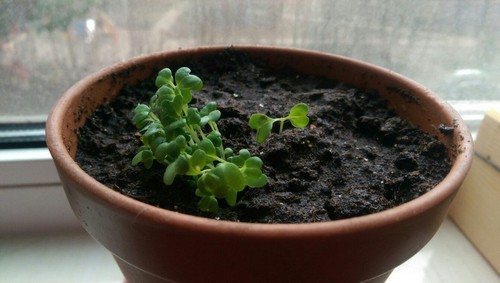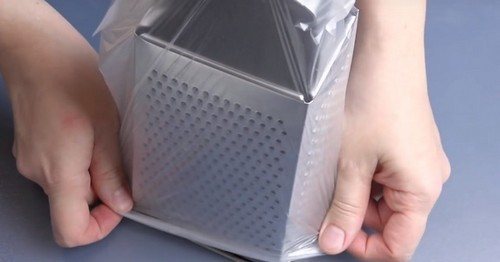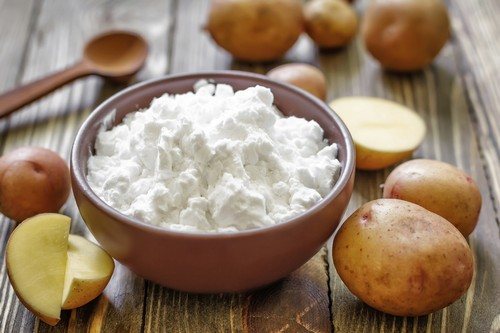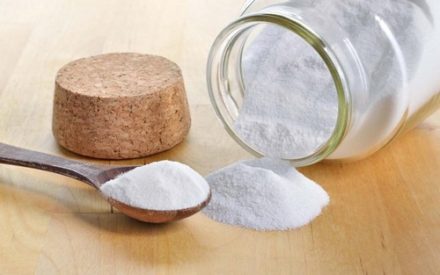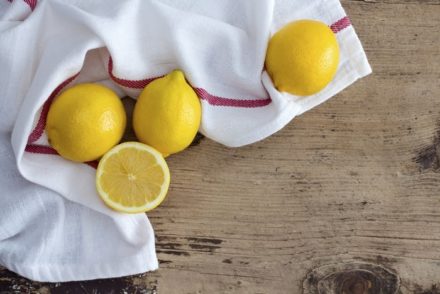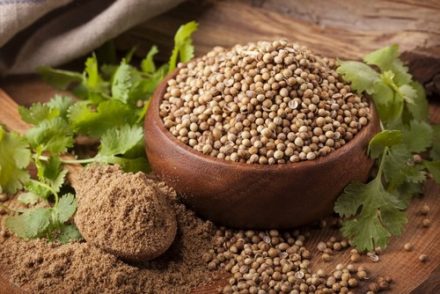Vegetables and fruits are the main sources of vitamins and minerals. The most benefits are contained in the layer of pulp, which is located directly under the skin. Therefore, when peeling, you need to remove the peel as thinly as possible in order to completely preserve the vitamins. There are several life hacks for economical cleaning.
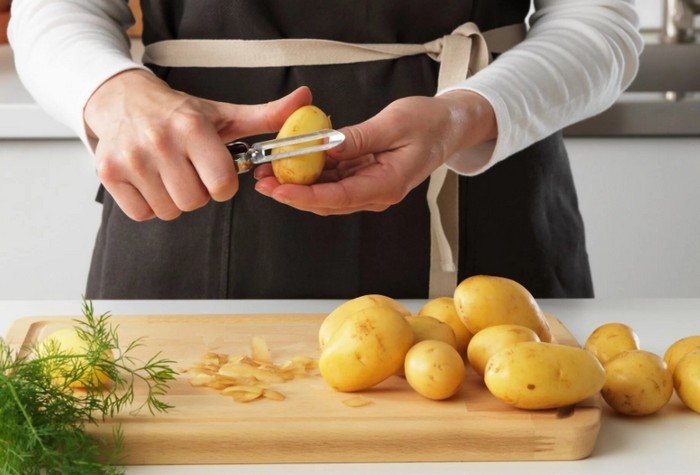
Boiling water for thin skin and juicy pulp
To economically remove the skin from tomatoes, bell peppers, apricots and peaches, you can use one of the most popular methods.
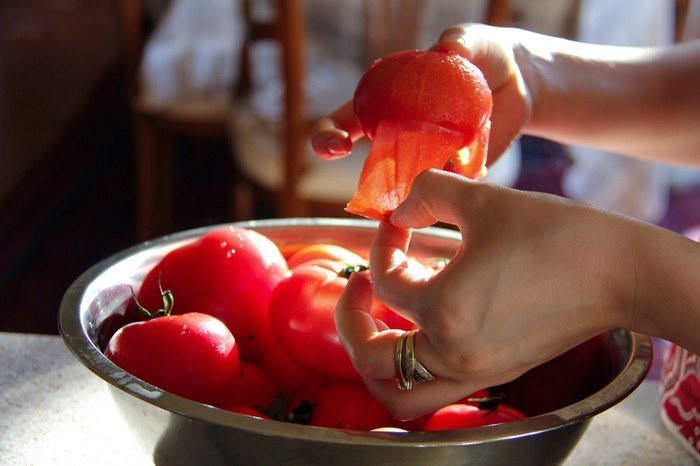
Necessary:
- Boil water in a saucepan or kettle.
- First wash fruits or vegetables with running water and make a cross-shaped cut.
- Place in a deep bowl.
- Scald the food with boiling water and leave for no more than half an hour.
- Remove vegetables or fruits and rinse with cold water.
- Use the back of the knife to hook the loose skin near the cut.
- Pull the edge and remove the film.
- If the vegetable is still difficult to peel, you need to re-scald, reducing the time by 15 minutes.
- To preserve the natural taste of small tomatoes, you can immerse the vegetable in ice water after boiling. The shock from the temperature difference will ensure the freshness of the tomatoes.
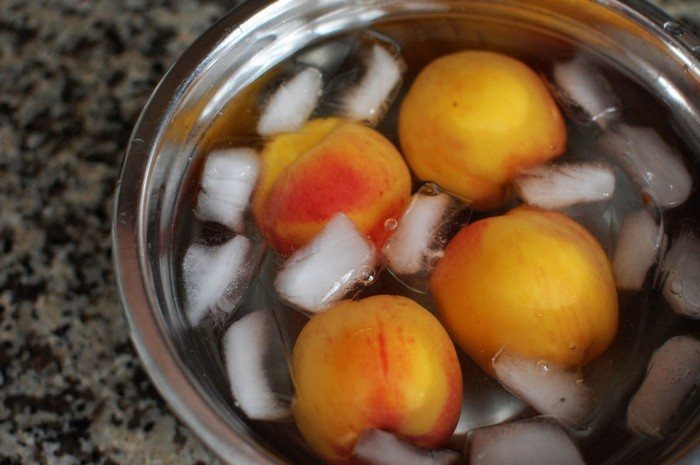
When peeling a peach this way, your hands remain clean and the juice does not splash on the table or clothes. It is better to remove all spoiled areas, since rotting microbes develop much faster in a peeled peach.
Salt water and microwave
To remove the skins of young potatoes, soak the tubers in salted water for about 20 minutes. The salt will corrode the skin, so the shell can be removed with your fingers. If the skin is already thick, you can boil the tubers without peeling, making a cut on each one before cooking. Pick up the skin from the finished potato and pull it off with a knife.
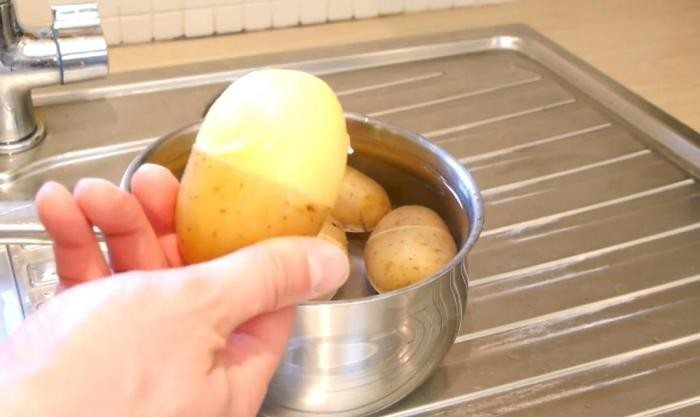
After peeling beets, your hands remain stained and the knife may slip, but the peel is peeled off in thick ribbons. To make cleaning faster, the root vegetable needs to be pierced in several places and wrapped in a bag without tying it. Place in the microwave at 500 W for 2 minutes. The skin can be easily removed with your fingers without a knife. You can cook the root vegetable in the same way, increasing the cooking time to 5 minutes.
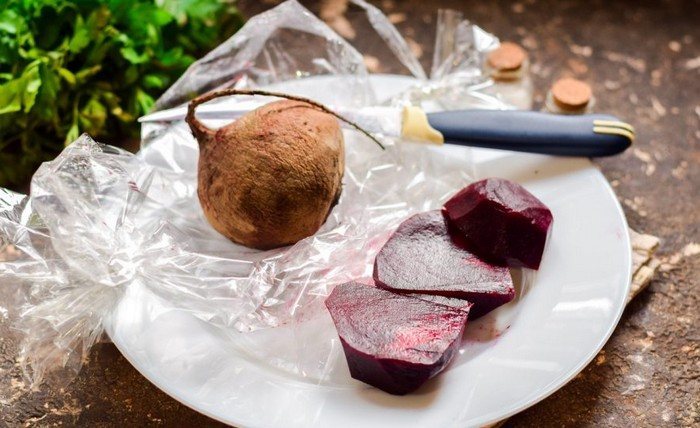
Microwaves are excellent for removing skins from onions and garlic. You need to cut off the ends, place the heads for 30 seconds and shake the onion and garlic so that the remaining husks fall off.
Spoon and glass for exotic soft fruits
Fruits like fleshy mango, ripe kiwi or oily avocado are difficult to peel without damaging the juicy flesh. A knife will not be able to cut off a thin layer of skin, since it is tightly adhered to the pulp. For convenience, you can use a glass or glass.
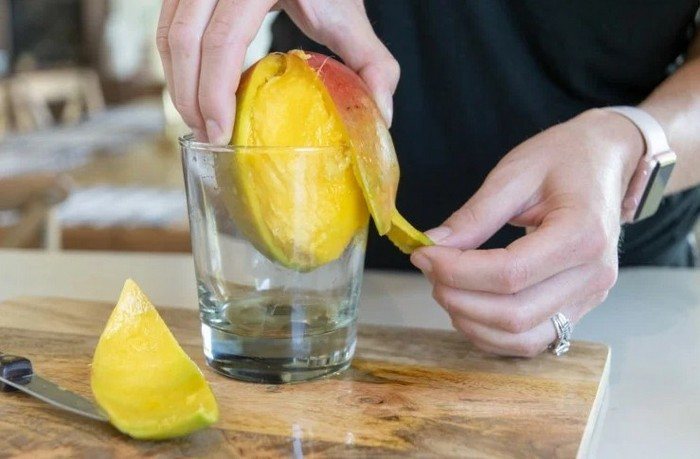
Cut the fruit in half. Place the slices on the edge of the glass and pull them down. The pulp falls into the glass, and the skin remains in the hand. If you cannot completely separate the pulp the first time, you can repeat the procedure until the skin remains thin. You can also use a regular tablespoon. Insert it between the skins and methodically separate the middle.
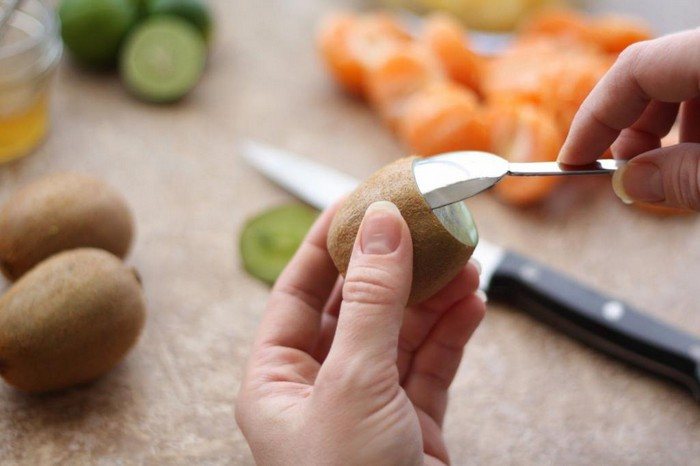
Simple life hacks will allow you to quickly and economically peel vegetables and fruits. When done correctly, the maximum amount of vitamins remains on the pulp. The skin will remain thin and the juice will not leak out.


